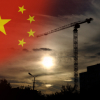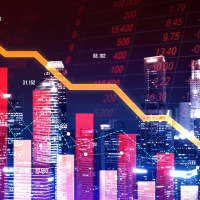Insights
New Zealand Fixed Income Monthly – October 2023
The general election held in October resulted in a change in government for New Zealand. Although it is difficult to gain a full picture at this stage, we can make some key observations on monetary policy: the Reserve Bank of New Zealand’s mandate could be pared back to ensure that its sole focus is on managing inflation.
Navigating Japan Equities: Monthly Insights from Tokyo (November 2023)
We analyse the Bank of Japan’s decision to further tweak its yield curve control scheme amid the latest developments hinting at sustained wage growth; we also assess why an acute labour shortage could be a golden opportunity for Japan Inc. to change structurally.
Harnessing Change - Monthly Insights: Asian Equity-October 2023
While the risk-off environment stretched into another month, we are still finding plenty of positives in Asia. India’s macro remains favourable; Chinese equity markets are near the cheapest in 20 years; and the semiconductor industry is showing signs of a bottoming. With the US potentially having reached peak interest rates, this could be a welcome backdrop for Asian markets going forward.
Assessing the impact of Green Bonds
The Green Bond market has experienced tremendous growth since 2007, but despite its rapid success, there are still barriers to overcome. In particular, assessing the impact of Green Bonds continues to be a contentious topic.
Biodiversity is next for green bond expansion
Our economic system is based on a model of take, make and waste that consistently over-utilises and fails to replenish Earth’s valuable, but dwindling resources. The need to transform how we interact with nature creates a major opportunity for the green bond universe. So far, issuers have successfully embraced funding the transition toward carbon neutrality, but far fewer are looking at regenerative biodiversity projects or initiatives that seek to protect our ecosystems from loss.
The climate change megatrend
Although once-in-a-generation exceptional weather events now risk becoming alarmingly routine, there is still time to turn the tide. This need for immediate action is why we define climate change as an investment megatrend, and we believe Green and Sustainable Bonds have a vital role to play.
China and India’s contrasting inflation front
We explore the opportunities and risks emanating from China’s near-zero inflation and India’s above-average consumer prices.
Balancing Act-Monthly insights: Multi-Asset Team-October 2023
Defying seemingly broad sentiment that a slowdown is coming, the US economy continues to chug along, and bond yields are continuing to wake up to the monetary reality that long-term rates need to be repriced accordingly. The adjustment has been aggressive and fast. Still, there is a natural limit to these types of moves.
Modern alpha relies on multiple sources and is therefore more stable and recurring than the traditional “big bets”. For most investors, the main source of alpha is fundamental research. But to add stability it is plausible to combine fundamental research with quantitative strategies as an additional alpha source.
On the Ground in Asia-Monthly Insights: Asian Fixed Income-September 2023
Amid the current rise in oil prices, global central banks have become more vigilant against inflation, becoming increasingly wary of risks occasioned by a potentially premature end to their rate hiking cycles. Consequently, we deem it prudent to be more cautious on duration. We therefore have a largely neutral view on duration for most countries in the region.
We have long been enthusiastic about the ASEAN share markets, and the region continues to offer appealing prospects. While the fundamental drivers behind ASEAN’s growth and opportunities are not entirely new, in our view the trends remain irrepressible. We discuss two key pillars—industrialisation and consumerisation—that are expected to help cement ASEAN’s place in the minds of investors.
Realigning fixed income with purpose
While fixed income issuance has become a standard mechanism for governments and companies to raise finance, it often lacks a defined purpose. However, the growing trend of responsible investing is changing that. The need to tackle our planet’s many climate, environmental and societal challenges is reuniting fixed income with its sense of purpose.
New Zealand Fixed Income Monthly – September 2023
Although the Reserve Bank of New Zealand stated in May that inflation was likely to return to its target range of 1-3% per annum if the Official Cash Rate remained at a restrictive level for some time, market expectations for interest rates have changed significantly since. At that time, rate hikes were expected to lead to rate cuts as inflation began to ease. New Zealand’s inflation has proved stickier than expected, however, as shown by the 6.0% annual rise seen in the consumers price index for the June 2023 quarter. This shows that interest rates continue to be held hostage by high inflation.
Japan primed for resurgence after a turnaround year
We believe that a long-term revival looms for Japan. Deflationary pressures are dissipating amid rising wages. The financial markets are headed for a resurgence, supported by robust stocks—which could benefit further from a re-allocation of the country’s vast household savings—and BOJ monetary policy headed towards normalisation after decades of unorthodox easing.
Navigating Japan Equities: Monthly Insights from Tokyo (October 2023)
This month we discuss the timing of Japan’s savings to investments push as assets held by households hit a record high; we also look at the rise in the domestic long-term yield to a 10-year peak and assess its potential impact on the equity and credit markets.
New Zealand Equity Monthly – September 2023
New Zealand equities continued to see weakness in September, with the market falling by approximately 3%. This partly reflected broader volatility given that the Australian market declined by about 4% and US equities saw a fall of approximately 5%. More notably on a domestic level, however, the market’s direction was affected by the key August round of corporate results. The August reporting season is the most significant for New Zealand given that many companies release their full-year results and some firms with December fiscal year-ends release their half-year results during the month.
Harnessing Change - Monthly Insights: Asian Equity-September 2023
With oil markets closing in on US dollar (USD) 100 per barrel and US bond yields reaching 16-year highs, one could be excused for being struck by a bout of conservatism. With valuation dispersions again back to all-time highs, we contend that the risk-reward looks more favourable when taking a long-term view of Asia.
“Bold and fundamental changes” to Japan’s NISA a positive driver for Japanese equities
Changes to Japan’s domestic tax-free savings scheme – the Nippon Individual Savings Account (NISA) –are expected to deliver an increased flow into mutual funds both international and domestic, and attract a younger generation of investors in one of the world’s most liquid markets in terms of household wealth.
Global Investment Committee’s outlook
We expect occasionally volatile, but positive trends for the global economy, financial system and markets in each of the next four quarters. Regionally, we prefer the European and Pacific Ex-Japan markets for the 4Q, and also Japan’s on a 12-month view.
Nikko Asset Management’s investment experts delve into the risks and opportunities arising from China’s flagging economy and its weakening property sector.
Shift to secular growth could be a “real deal” moment for Japan equities
The current rise in Japanese equities could have legs, setting it apart from other phases in the previous 30 years which often led to disappointment. Japan’s shift from cyclical to secular growth, highlighted by labour shortages fuelling a rise in wages, is a development that is setting the equity market on a fundamentally different trajectory. We expect wage developments, as a factor affecting both consumption and inflation trends, to help determine further gains for Japan equities.
Japan’s macro picture is positive, but focus on corporate earnings
It isn’t wise to dwell on the details of any countries’ newly published macroeconomic data, but the overall outlook for Japan is slow but steady economic growth. However, as the last few decades have shown, such should not discourage investors if the powerful corporate governance trends and technological advancements continue as we believe they will.
Balancing Act-Monthly insights: Multi-Asset Team-September 2023
The markets are pricing “higher for longer” with US Treasury 10-year yields pressing above their October 2022 highs, tempering enthusiasm across global equities into neutral sentiment territory. As inflation pressures continue to ease without tipping the jobs market into recession, the US Federal Reserve still looks on course to achieve a soft landing. However, not surprisingly the markets remain slightly on edge as the top in yields cannot yet be called for certain.
On the Ground in Asia-Monthly Insights: Asian Fixed Income-August 2023
Indian and Indonesian bonds are expected to fare relatively better than their regional peers, supported by their attractive carry, positive macro backdrop and policy credibility. As for currencies, expectations that US interest rates may have reached their peak could weigh on US dollar sentiment and favour Asian currencies in return.
Harnessing Change - Monthly Insights: Asian Equity-August 2023
While regional markets understandably retained its focus on the economic weakness in China, we believe that the fear gripping the markets belies the region’s long-term sustainable return and positive change opportunities. The challenges that China must overcome are not insurmountable and certainly do not translate to systematic or social instability risk, in our view.
Japan’s long-term value is getting unlocked
There’s more to Japan’s renaissance than relatively inexpensive valuations. Companies have become more receptive to corporate reform and shareholder engagement; Japan’s services sector is benefitting from a resumption in tourism; and, in Japan, inflation is settling at supportive levels after years of deflation.
Focusing on the knowns in an era of unknowns
We are currently in the midst of a regime change to a world of slower growth, periodic bouts of inflation and technological transformation. While much of what the future holds is unknowable, such as the impact of artificial intelligence, there are other clear long-term trends that can help guide investors: the path to clean energy, growing healthcare requirements and the re-emergence of the travel industry.
India’s transformational trends
Structural reforms, investments in energy transition, rising consumption and vast improvement in India’s infrastructure, productivity and manufacturing sector are expected to bolster the country’s next phase of economic growth and development.
Climate change solutions in Japan
The climate change crisis we are witnessing presents both challenges and opportunities. Focusing on the latter from an investment perspective, in our view asset managers are in a position to help facilitate society’s goals of reducing GHG emissions and decarbonising.energy
Five Years of Disruptive Innovation
To mark five years since the launch of the Nikko AM ARK Disruptive Innovation Fund, Nikko AM and ARK Invest take a look at the five primary innovation platforms, their achievements over the last five years, and our expectations for them during the next five to ten years.
Navigating Japan Equities: Monthly Insights from Tokyo (September 2023)
This month we take a closer look at Japan’s 2Q GDP surge and analyse the factors that could offset a potential slowdown in exports; we also assess why the markets are less perturbed by a weak yen compared to a year ago and discuss the prospects of the currency strengthening in the months ahead.
Finding opportunities from geopolitical change in Asia
A changing geopolitical landscape in Asia coupled with a desire to partially diversify away from China-based supply chains is creating opportunities in India and Indonesia.
Japan’s “Show Me the Money” corporate governance: 2Q profit margins near record high
The just-released 2Q CY23 data on aggregate corporate profits in Japan was somewhat mixed, but the overall corporate recurring pre-tax profit margin rebounded near its record high on a four-quarter average.
Balancing Act-Monthly insights: Multi-Asset Team-August 2023
The economic wheels continue to turn forward, surprising many given that the Federal Reserve lifted the overnight target rate to 5.5%, a level not seen since 2001. It is also above the top rate of 5.25% seen back in 2006–2007, before rate cuts ultimately failed to prevent the Global Financial Crisis. This time around, balance sheets are much stronger in the private sector and so are regulations. And now, the combined fiscal impulse and investment wave may keep pushing recession risk further away.
New Zealand Fixed Income Monthly – July 2023
Recent data demonstrate that declining demand is now a major concern for companies as recent rate hikes by the Reserve Bank of New Zealand increasingly constrain economic activity.
New Zealand Equity Monthly – July 2023
The devastation from the tropical cyclone and flooding that struck New Zealand’s North Island in February 2023 was a reminder of the increasing need to mitigate extreme weather events and to take stock after they strike.
On the Ground in Asia-Monthly Insights: Asian Fixed Income-July 2023
We retain our preference for Indonesian government bonds and for currencies, we believe that greater support for the renminbi from Chinese policymakers should remove a near-term headwind for currencies in the region. We take a more cautious view towards risk in the near-term due to a slightly weaker macro backdrop and uncertainties ahead which make the valuation of Asia investment grade credit look slightly stretched versus both historical levels as well as developed market spreads.
Harnessing Change - Monthly Insights: Asian Equity-July 2023
With the Chinese economy on the brink of deflation, the timing of the Chinese government’s recent pro-growth directives was a very welcome signal. If carried out, they can lead to structural changes that can potentially lead to an improvement in consumer confidence and growth in the Chinese economy, in our view.
Navigating Japan Equities: Monthly Insights from Tokyo (August 2023)
Although the Bank of Japan tweaked its policy in July, we discuss why the move may have been a compromise given expectations the central bank will wait for more concrete signs of inflation before taking a more significant step; we also describe why the rise by Japanese equities could have “legs” this time.
Balancing Act-Monthly insights: Multi-Asset Team-July 2023
While market positioning has shifted towards a more constructive outlook, the macroeconomic mood has not. Rather, persistent upside pressures in equity markets have forced investors back into the market so they do not fall too far behind benchmarks and their peers.
Asset TV: Climate transition – threats and opportunities
Nikko AM’s Head Portfolio Manager – Core Markets, Steven Williams, recently participated in Asset TV’s Masterclass on the threats and opportunities for investors in the climate transition. Here are the highlights of Steven’s contribution to the discussion.
On the Ground in Asia-Monthly Insights: Asian Fixed Income-June 2023
We remain constructive on relatively higher-yielding government bonds amid a supportive macro backdrop. Our favourable view of higher-yielders is further grounded on the view that lower-yielding government bonds will be more vulnerable to volatility in UST bonds.
New Zealand Fixed Income Monthly – June 2023
The Reserve Bank of New Zealand indicated in May that the current interest rate hiking cycle is by and large complete, with the Official Cash Rate (OCR) having peaked at its current level of 5.5%. The central bank also signalled that it is unlikely to cut the OCR in the near future, stating its intention to keep interest rates at a restrictive level for some time in order to keep inflation under control. In addition, New Zealand has a general election scheduled for 14 October 2023, further reducing the likelihood of near-term moves in the OCR.
With inflationary issues subsiding across most of Asia, many regional central banks are now holding interest rates steady, if not cutting rates in the case of China. The US, meanwhile, is still warning of further rate hikes despite some overall softening in data. Of more concern to us is what China does next.
Exploring Asia’s investment megatrends: consumption, healthcare and net zero
Right now, three megatrends are widely prevalent across Asia which look like significant drivers of investment growth for many years to come. These megatrends are consumption, healthcare and the net zero transition.
Navigating Japan Equities: Monthly Insights from Tokyo (July 2023)
As a virtuous inflation cycle helps boost stocks, this month we focus on how labour shortages could nudge Japan away from a deflationary mindset; we also assess the BOJ under a new governor, who has said that monetary policy surprises could be unavoidable.
Capital efficiency initiative in Japan highlights market opportunity
Japan’s corporate governance reform started nearly a decade ago is an ongoing process, but it received a boost from the Tokyo Stock Exchange’s latest initiative in January. The latest chapter in corporate governance reform coupled with Japan’s break from a deflationary mindset and the full re-opening of the economy after the pandemic are expected to create a more favourable investment environment for Japanese equities.
Global Investment Committee’s outlook
We expect occasionally quite volatile, but positive trends for the global economy, financial system and markets in each of the next four quarters. Regionally, we prefer the European market for the next two quarters, and also include Japan’s on a 9–12-month view.
Balancing Act-Monthly insights: Multi-Asset Team-June 2023
The divergence in growth outlook reflected in equities continues to widen, as secular growth in the form of tech and artificial intelligence (AI) developments appears to have the upper hand in determining the overall market direction. This is evident with the tech sector being up (and Japan, for different reasons) while most other sectors and geographies are down over the month. This defies conventional wisdom—that earnings can continue to grow into a recession, but these disruptive developments are indeed significant, and perhaps this is the right directional prognosis should a recession prove to be shallow.
On the Ground in Asia-Monthly Insights: Asian Fixed Income-May 2023
We remain constructive on relatively higher-yielding Philippine, Indian and Indonesian government bonds, on the back of the relatively supportive macro backdrop for these countries. As for currencies, we expect the Thai baht and Indonesian rupiah to continue outperforming regional peers.
Why investors should consider increasing their exposure to Japan
A stable political backdrop is just one of several key considerations supportive of investors increasing their exposure to Japanese equities, in our view. We believe that reforms to both its corporate governance structure and the configuration of its stock market have made Japan a more attractive investment destination for global investors. The removal of COVID-19 inbound travel restrictions is expected to provide Japan with an additional economic boost, with tourism further benefitting from the yen’s relative weakness.
New Zealand Fixed Income Monthly – May 2023
In an encouraging sign for New Zealand, the Reserve Bank of New Zealand (RBNZ) signalled in May that the Official Cash Rate is likely to have peaked at its current level of 5.5%. The RBNZ appears to have shifted its focus from inflationary pressures to factors that will drive inflation down. Factors cited include weak global growth, easing inflationary pressures among New Zealand’s trading partners and reductions in supply chain constraints.
New Zealand Equity Monthly – May 2023
The Reserve Bank of New Zealand’s decision to have the Official Cash Rate (OCR) peak at 5.5% surprised the market, which had started to price in a peak of 5.75% or 6.0%. The lower-than-expected peak in the OCR is positive for equities as higher interest rates dampen spending by consumers and businesses.
On-the-ground view of post-COVID China
A recent trip to China offered first-hand observations of the country’s technological advancement, changing consumer patterns and new social norms as the world’s second largest economy moves on from the pandemic.
As the developed world continues to struggle with inflation and a lack of growth, Asia stands out as the bright spot, with inflation well in check and monetary cycles peaking ahead of the West. Growth in Asia is also expected to outperform the West over the next few years, reversing a decade-long trend of developed world growth outperformance.
Navigating Japan Equities: Monthly Insights from Tokyo (June 2023)
This month we discuss the factors behind the Nikkei’s rise to a 33-year high; we also assess Japan’s opportunity to re-invent itself as a technology hub with leading global chipmakers bringing investments and manufacturing to its shores.
Global Equity Quarterly (Q1 2023)
At times of stress, we believe that it makes sense for investors to reach for something that has recently provided comfort. Our view is that that is exactly what we have seen in Q1, as banking stock volatility has led investors back into the technology sector. Q1 is now behind us though and is often a time of the year characterised by mean reversion such as we saw in 2022.
As the green bond market diversifies, Sustainability-Linked Bonds (SLBs) – which are linked to an issuer’s broader sustainability performance – have garnered significant investor attention and scrutiny. While the concept is compelling, concerns have arisen that their sustainable targets are sometimes easy to beat and therefore easy to game. Structural improvements for SLBs should help make it a more attractive sustainable investment class within the ESG universe.
Global Unconstrained Bond Strategy Q2 2023 outlook
We present our Q2 2023 outlook for the Global Unconstrained Bond Strategy which incorporates our core markets, emerging markets and global credit views.
The long-held theme of this report (since 2006) that profit margins remain on a structural uptrend, despite sluggish domestic GDP growth, still holds and domestic and international investors finally realise that Japanese corporations are delivering solid profits and shareholder returns, with the increased expectation that such will likely continue over the intermediate term.
Future Quality Insights -May 2023-A bridge over troubled waters
Life is different in the post-pandemic world. Equity markets and economies are different too; geopolitics have deteriorated and barriers to trade have increased while the threat of global warming looms ever larger. In this short essay, we attempt to bring some perspective to this while giving a view on where we are in markets today and what might happen next.
Exploring fast-growing Asian REITs
Asian REITs continue to be one of the fastest growing asset classes in the region, offering decent yields, a sustainable income stream and exposure to the region’s biggest landlords.
On the Ground in Asia-Monthly Insights: Asian Fixed Income-April 2023
China’s re-opening and supportive policy tone may continue to provide a critical counterweight to global macro weakness. Macro and corporate credit fundamentals across Asia ex-China are also expected to stay robust.
New Zealand Fixed Income Monthly – April 2023
As New Zealand’s current tightening cycle started about 19 months ago, it can already be said to be mature. It also follows that the full impact of the monetary policy decisions taken so far should now be building in the economy.
Balancing Act-Monthly insights: Multi-Asset Team-May 2023
Currently, we believe that valuations look stretched (mainly in the US) and volatility too low to justify that a new bull market is at hand, given the plethora of risks. We remain constructive on China's recovering demand and new sources of tech growth, but we are cautious for now for the relative complacency that appears not to adequately discount the eventually weaker economic data ahead and now renewed regional bank stress, and perhaps a US debt ceiling battle in the making.
A fundamental change for AI?
As the exponential growth of machine learning kicks in, we believe that big technology companies with the first mover advantage in AI and high-end manufacturers of AI-focused hardware and microprocessors, notably Asian players, are in a position of advantage.
New Zealand Equity Monthly – April 2023
New Zealand’s equity market was surprisingly strong in the first four months of 2023 given the current challenges faced by the economy. The actual picture is more mixed, however, partly as a result of the concentrated nature of the New Zealand market.
Navigating Japan Equities: Monthly Insights from Tokyo (May 2023)
This month we discuss how Warren Buffett’s focus on Japan has put the country’s market back on investor radars and how it could be a chance for companies to disseminate meaningful information; we also analyse the TSE’s surprise “name and shame” tactic with listed companies.
Financials, healthcare and energy buck the trend and rise in a down market.
Getting ESG right in Asia
Environmental, social and governance (ESG) matters are increasingly an important part of corporate culture across the Asia-Pacific region, with both investors and companies recognising the long-term value and significance of sustainable business practices.
Balancing Act-Monthly insights: Multi-Asset Team-April 2023
Market dynamics have changed quite considerably since mid-March after the regional bank failures in the US, which were quickly followed by turmoil at Credit Suisse leading to the bank’s forced marriage with UBS. The government response was swift and significant, and while central banks have attempted to message a somewhat normal return to its tighter policy agenda, markets simply are not buying it.
Asia’s healthcare opportunities
In Asia, where healthcare innovation and investment are borne from a critical need, the region’s healthcare industry today is where its technology industry was in the 2000s, meaning that a decade of investment is beginning to bear fruit.
On the Ground in Asia-Monthly Insights: Asian Fixed Income-March 2023
Against a backdrop of a more stable bond market, we prefer relatively higher-yielding Philippine, India and Indonesian government bonds. In addition, there appears to be early signs suggesting that inflationary pressures in these countries have likely peaked, which we see providing further support for these bonds. As for currencies, we expect the Thai baht and Indonesian rupiah to outperform regional peers.
Harvesting Growth, Harnessing Change - Monthly Insights: Asian Equity-March 2023
In a world starved of workers and growth, we believe that Asia’s ability to supply both puts the region on a very firm footing over the longer term. Once we get through this current US-led rate tightening cycle and the flush out of weaker financial institutions in the West, we see a bright future for Asia, which is now trading at extremely attractive valuations.
Navigating Japan Equities: Monthly Insights from Tokyo (April 2023)
This month we discuss how potential market volatility still bears watching even if the global banking turmoil may not directly shake Japan; we also assess how a steady domestic demand recovery may be in sight even if the public is slow to remove their masks after the recent easing of restrictions.
Consumption in Asia from a new perspective
Asia’s consumption trends were once thought to be heavily influenced by those in the West, but that is no longer the case. Asian consumers have diverse tastes and influences and they are starting to dictate global trends instead of merely absorbing them. We believe that Asian brands are well placed to respond to this new paradigm.
Resilience and attractiveness of Asian local bonds
Asian local currency bonds are expected to thrive as the region’s central banks end their rate hike cycle on the back of easing inflation. We believe that strong fundamentals, high-quality yields and limited foreign ownership are other factors that are supportive of this fixed income asset class.
Balancing Act-Monthly insights: Multi-Asset Team-March 2023
Investors have been dealing with elevated volatility in asset prices since the pandemic began. A contributing factor that continues to muddy the waters has been the volatility in economic data due to COVID-led distortions. In more recent months, particularly in the US, unseasonal weather patterns have made reading the economic tea leaves even more difficult.
Global banking turmoil from an Asian perspective
It could be some time before the market stabilises in the wake of the global banking turmoil, and investor appetite toward financial subordinated debt will likely be weak in the near term. That said, considering the current valuations of fundamentally stronger Asian banks, we believe that a large part of such concerns are already reflected in their spreads/price following the re-pricing which took place earlier in March.
Global Investment Committee’s Outlook
We expect fairly rough sailing for the global economy, financial system and markets in the next two quarters, but we do not expect disasters and there should be major relief for stocks later in 2023 as central banks begin to ease policy.
Asian financials: beyond the drama
Asian banks will be more insulated from the current global banking turmoil, in our view, thanks to smaller-scale rate hikes in Asia, prudent supervision by regional financial regulators, outsized capital adequacy ratios and sensible security exposure relative to total assets. We believe this will bode well for the sector in the longer term and enhance its attractiveness.
New Zealand Equity Monthly – February 2023
Bonds have been attracting more attention from investors recently in view of their higher yields and the possibility of capital gains. In addition, as equities have lost their shine for now amid higher interest rates, bonds are expected to continue to benefit from an asset allocation perspective.
New Zealand Fixed Income Monthly – February 2023
Bonds have been attracting more attention from investors recently in view of their higher yields and the possibility of capital gains. In addition, as equities have lost their shine for now amid higher interest rates, bonds are expected to continue to benefit from an asset allocation perspective.
On the Ground in Asia-Monthly Insights: Asian Fixed Income-February 2023
Countries in the region took divergent monetary paths during the month. India and the Philippines raised their respective policy rates, while Indonesia and South Korea maintained their interest rates.
Net zero made in Asia
We believe that there are substantial rewards for those who are capable of driving the push for global decarbonisation. So, the question is: who is building the kit for the world’s net zero ambitions? We believe that the answer, both now and well into the future, is Asia.
Navigating Japan Equities: Monthly Insights from Tokyo (March 2023)
This month we discuss what the market may initially seek the most from the next Bank of Japan governor; we also look at Japan’s expanding outlays, with tax revenue and inflation in focus.
Thoughts on the 2023 China National People’s Congress
The official GDP growth target of “around 5%” unveiled at China’s annual National People’s Congress was lower than many external forecasts, and fiscal policy looks less accommodative relative to both market expectations and that of 2022. In our view, these conservative targets leave room for outperformance and likely reflect cautiousness over unexpected events and reluctance in overstimulating the economy.
The MSCI AC Asia ex Japan Index slumped 6.8% in US dollar terms, giving up its January gains. China’s reopening and peak interest rates euphoria in January were short-lived as hotter-than-expected economic indicator releases in the US raised the spectre of higher-for-longer interest rates.
Today’s surgical robot, tomorrow’s robot surgeon
Considered to be one of the greatest modern-day medical breakthroughs, robotic surgery is revolutionising surgical practices around the world. The breakthrough is particularly prominent in China, which could be the next growth frontier for surgical robotic companies.
The just-released 4Q CY22 data on aggregate corporate profits in Japan was somewhat mixed, as the overall corporate recurring pre-tax profit margin fell from its record high on a four quarter average. The non-financial service sector ticked up, but the manufacturing sector fell from its record high.
Global Equity Quarterly (Q4 2022)
Current equity market conditions dictate that you choose your investment attire particularly carefully. In our view, buying profitless technology companies is like going up a Scottish mountain wearing flip-flops. You might get away with it, but the odds are not in your favour. Instead, we prefer the protection afforded by profits (and cash) generated today—not at some unspecified point in the future.
Thoughts on the BOJ you might not have heard, but should consider
Currently, there is a wide variety of predictions for the BOJ’s actions, with some expecting imminent hawkish decisions based upon some of Governor-nominee Kazuo Ueda’s “anti-distortion” comments, but changes are more likely to be gradual and tentative assuming the global economy continues improving.
On the Ground in Asia-Monthly Insights: Asian Fixed Income-January 2023
We maintain the view that global inflationary pressures may moderate further. We prefer Singapore, South Korea and Indonesia bonds. As for currencies, we favour the renminbi, the Singapore dollar and the Thai baht.
Balancing Act-Monthly insights: Multi-Asset Team-February 2023
Growth prospects look to be improving—a sharp shift from late 2022 when the markets had strong conviction that a first half slowdown was to be followed by a better second half.
Harvesting Growth, Harnessing Change - Monthly Insights: Asian Equity-January 2023
Asian equities made a strong start to 2023, with the MSCI AC Asia ex Japan Index returning 8.2% in US dollar (USD) terms in January, supported by a rebound in investor sentiment towards China.
Japan Value Insights: CDMOs and health-related social needs
Contract development and manufacturing organisations (CDMOs) could play an important role in addressing health-related needs as society seeks rapid solutions to issues such as an increase in refractory diseases.
Navigating Japan Equities: Monthly Insights from Tokyo (February 2023)
This month we assess the trends in wages and salaries with significant change potentially in progress; we also discuss how changes at the BOJ may affect the market.
Balancing Act-Monthly insights: Multi-Asset Team-January 2023
In our view, the change from dollar strength to relative weakness is meaningful for the shift in relative growth prospects, favouring the rest of the world over the US.
Consumption potential in China’s lower-tier cities
While consumer sentiment may be weaker across China presently, we believe that the long-term outlook for the country’s consumer sector remains attractive. China’s lower-tier cities are stepping up to fuel the growth engine that once relied heavily on megacities.
Future Quality Insights -January 2023- The path to clean, secure and affordable energy
Clean, secure and affordable energy is likely to be one of the major challenges of this decade. Given we need abundant energy to complete the energy transition, we believe fossil fuel companies that are actively enabling transition to low carbon society can be part of the solution. They often understand how to deliver global energy at scale and have the balance sheets capable of enabling the transition to clean energy.








































































































